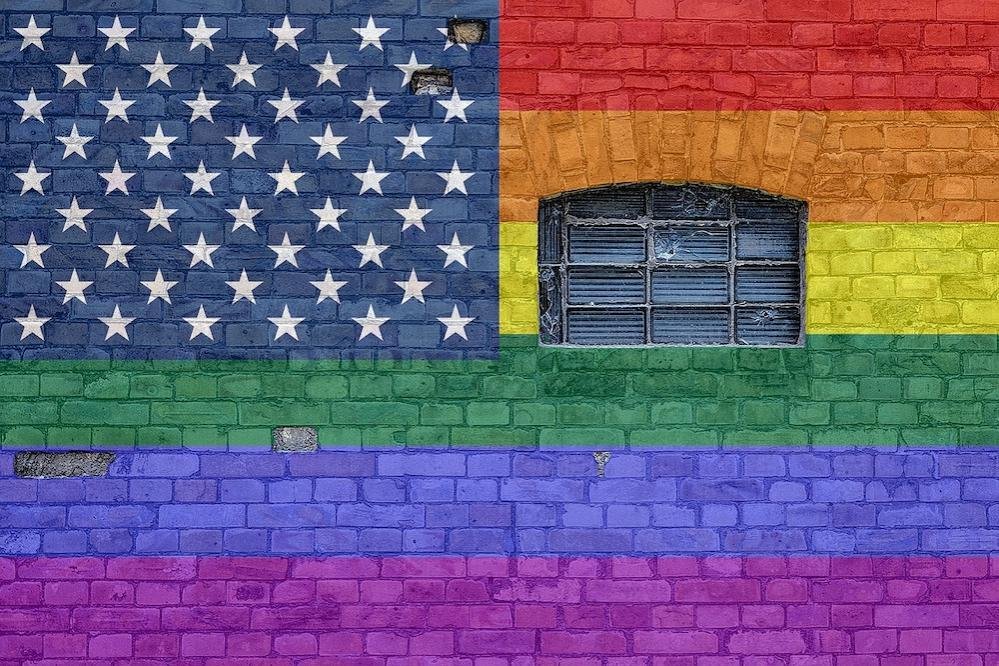family
A Decade Post-Obergefell: LGBTQ Protections Undermine and Evolve

As the 10th anniversary of the Supreme Court’s pivotal ruling in *Obergefell v. Hodges* nears, support for same-sex couples has reached unprecedented levels. However, a concerning trend emerges: LGBTQ rights are increasingly under threat from the current composition of the high court.
According to a recent Pew Research Center report, over 60% of LGBTQ adults feel accepted by society, attributing much of this progress to the *Obergefell* decision. Since 2015, many have noted enhanced support from religious leaders, as well as better representation in politics and entertainment. Yet, the survey highlights a troubling reality—more than half of LGBTQ adults have experienced slurs or jokes, and nearly 40% feared for their safety due to their identity.
This data coincides with a shift within the Supreme Court, where only two of the justices who voted in favor of marriage equality remain. The current court majority has voiced opposition to same-sex marriage rights and is preparing to deliberate on various issues affecting the LGBTQ community, including access to gender-affirming care and the availability of LGBTQ literature in schools.
The transformation within the Supreme Court has been significant. Nearly three decades ago, the court upheld anti-sodomy laws in *Bowers v. Hardwick*. Since then, landmark rulings have evolved public opinion. For instance, in 2003, the court’s decision in *Lawrence v. Texas* overruled *Bowers*, catalyzing support for same-sex marriage. By 2013, more Americans favored same-sex marriage than opposed it, leading to a key ruling in *United States v. Windsor* that invalidated a clause of the Defense of Marriage Act defining marriage as a union exclusively between one man and one woman.
On June 26, 2015, the Supreme Court officially recognized the right to same-sex marriage, a landmark moment celebrated by many. Justices Anthony Kennedy, Ruth Bader Ginsburg, Stephen Breyer, Sonia Sotomayor, and Elena Kagan formed the majority, epitomizing a commitment to equality under the Fourteenth Amendment. Eli Coston, a professor at Virginia Commonwealth University, noted that this decision brought a much-needed sense of validation to LGBTQ relationships after years of legislative setbacks.
However, a decade later, the landscape has shifted again. While LGBTQ individuals still enjoy protections from *Obergefell*, those safeguards feel less robust. Abbie Goldberg, a Clark University professor, emphasized that marriage equality has not automatically translated into broader rights for the LGBTQ community. Some jurisdictions continue to allow child welfare agencies to discriminate against LGBTQ individuals under religious pretenses.
Recent court decisions illustrate the erosion of certain rights. The Supreme Court found in *Bostock v. Clayton County* (2020) that employment discrimination based on sexual orientation is unlawful. Nevertheless, Pew reports that over half of LGBTQ adults feel they have encountered discrimination related to their sexual orientation. Justice Sonia Sotomayor has accused her colleagues of enabling a “license to discriminate” amidst rising anti-LGBTQ legislation across various states.
Opponents of LGBTQ rights have increasingly exploited First Amendment arguments, seeking religious exemptions from anti-discrimination laws. In *303 Creative v. Elenis*, the conservative majority ruled in favor of a wedding website designer who declined services for same-sex couples, citing First Amendment rights. This decision foreshadows further court deliberations on issues like parental control over educational content featuring LGBTQ themes.
Advocates worry that such rulings could enable a new standard where schools may align their curricula with parental religious beliefs, undermining LGBTQ visibility and acceptance. The potential for negative implications is troubling, with experts highlighting the growing weaponization of religious freedom against LGBTQ rights.
Sadly, amid these legal battles, transgender Americans remain particularly vulnerable. Pew data indicates that only 13% of transgender individuals report feeling accepted by society. Naomi Goldberg from the Movement Advancement Project noted that anti-equality factions have strategically shifted focus to transgender issues, diverting attention away from pressing community challenges.
Transgender youth face significant barriers, including bans on participation in sports and access to gender-affirming healthcare in numerous states. The Supreme Court is expected to address these contentious topics in the upcoming term, highlighting a pattern of discrimination that transcends mere societal acceptance.
In stark contrast to the momentum gained from *Obergefell*, transgender rights are increasingly compromised. Recent Supreme Court actions enabling the dismissal of transgender military personnel underscore ongoing systemic challenges. While some LGBTQ advocates prioritize incremental gains, Coston emphasizes the need for comprehensive protection that includes all members of the community.
No immediate threats to *Obergefell* are apparent from state lawmakers; however, justices have indicated a willingness to revisit past rulings. In the aftermath of *Roe v. Wade* being overturned, Justice Clarence Thomas called for reevaluation of precedents, including *Obergefell*. Although potential federal protections exist, their efficacy remains uncertain if the Supreme Court decides to overturn established rights.


















